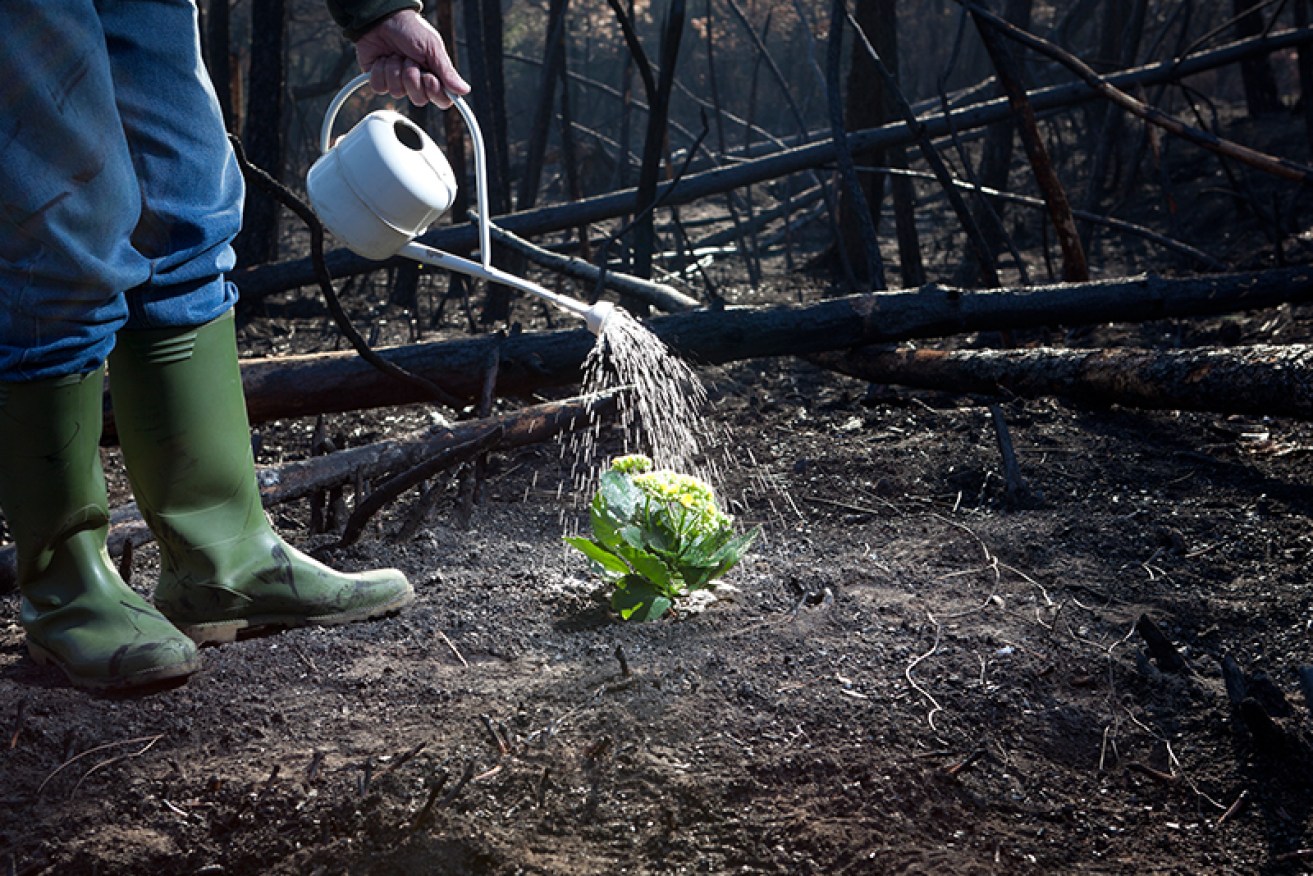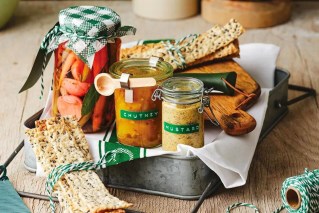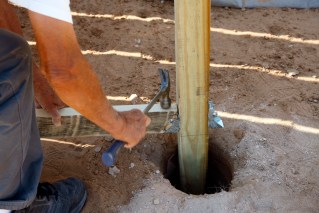Save our soil: extreme garden rescue tips


Getty
Point Break is on (again) at the movies and everybody is looking again at extreme sports and the challenging elements of nature. But what about extreme gardening?
Every day plants pit themselves against the weather, natural disasters and man-made challenges and we don’t see Hollywood making box office hits about them!
• Five expert gardening tips for summer
• The strange trick every gardener should know
• Tips for growing your own veggie garden
Seriously, when bushfires ravage gardens, frosts burn off new growth and rain deluges and storms uproot, swamp and snap plants, what is the best way forward for your garden’s recovery?
Here are five SOS garden survival tips for when it’s super hot, super cold, really rainy or really dry, but the principals of good gardening remain: don’t feed stressed plants with strong fertilisers and prune to encourage new growth.
1. Heat Waves
Prune
High temperatures will cause plants to wilt and then collapse. This can be lethal in extreme circumstances or simply cause the new growth, which is more susceptible, to brown or blacken. High wind speeds can also cause the same sort of damage.
Trimming this damaged growth off will promote new growth. This is fine as long as this flush doesn’t then get burnt by a second heat wave. If you think there is any chance of another spike in temperature, delay your pruning another few weeks or months.
Soak
Either way, a good soak with a seaweed solution will help damaged roots repair and an application of compost will encourage great soil bacteria, both of which will help your plants recover.
Pick natives
To help prevent this happening again, choose hardy plants that have hairy leaves or succulent foliage as these are adapted to extremes. Many Australian natives will also cope with higher temperatures, but stay clear of the rainforest types like lillypillies – these just frazzle!
Water and shade
If you know a hot day is forecast, water deeply the day before and you can set up temporary shade with sheets, shade cloth and hessian over susceptible plants. Even old palm and fern fronds can protect plants below them.
For an artificial helping hand, spray on a product sold as Drought Shield (or Stress Guard) made by Yates. It’s like blockout for your garden!
2. Freezing temperatures
Cold-proof
Frosts and snow even might seem a fair way off, but in areas that get into minus degrees, gardens need to be hardy to not blacken and burn off with the cold. Plants mostly adapt by being deciduous (losing leaves) or herbaceous (dying down to a permanent rootstock) over winter, but others have waxy leaf coverings, thick bark or downward pointing branches to help deal with snow and ice.
Most damaging are the frosts that occur late spring or early summer, when plenty of new growth, which is the most vulnerable, has already shot. Again, the use of covers or the spray on Stress Guard, which also helps against the cold, will help.
Take shelter
Bringing plants in pots under cover, and tying shrubs branches together so that they don’t break, are other successful strategies.
3. Storms and Floods
Raise it up
Plants suffering from lack of drainage in the garden are particularly prone to rotting off or fungal attacks.
In these areas planting in raised garden beds or in pots can help.
Clear debris
It’s very difficult when the whole area is inundated to do anything other than wait for the waters to recede. Once they do, trimming any broken or damaged branches, making sure that their trucks are free of debris and even crown lifting plants to ensure good air flow can help.
Apply fungicide
If your favourite garden specimen is dropping leaves despite the rain, there is a good chance you have phytophera or another root rot. An application of a fungicide can help, but seek professional advice from your local nursery.
4. Drought
Mulch, water, compost and shield
Long periods without water can take their toll too. Deep watering, regular applications of compost, seaweed solution, water surfactants (Like Better Wetter or Saturaid) and using ‘Drought Shield’ can all help. In drought prone areas, planting with water storing crystals is a good safe guard, as is a good thick layer of mulch.
Choose well
Best of all, choose plants that can cope with periods of dry. Many of these will have a “one drop” symbol on their plant tag or say that they are xerophytic or drought tolerant.
5. Fires
Keep your distance
Many Australian natives have adapted to regrow almost instantly after fires have passed. Gums, banksias, Waratahs, hakeas and many grasses for example will flourish, as will many wild flowers like egg and bacon bush, flannel flowers and croweas. Some non-natives have the ability to retard fire, though won’t regenerate as well if badly burnt.
A garden in prone areas should be careful to maintain a distance between the plants and the buildings, as over hanging branches, full gutters and so on are all reasons houses catch alight.
Water
If your garden was singed, water well and use seaweed solution.
Clear it out
When new growth starts to appear, you should get an idea which parts are going to regenerate and which are too damaged. These dead areas can then be removed, but do give them a few months to see if they are, in fact, like Lazarus.














